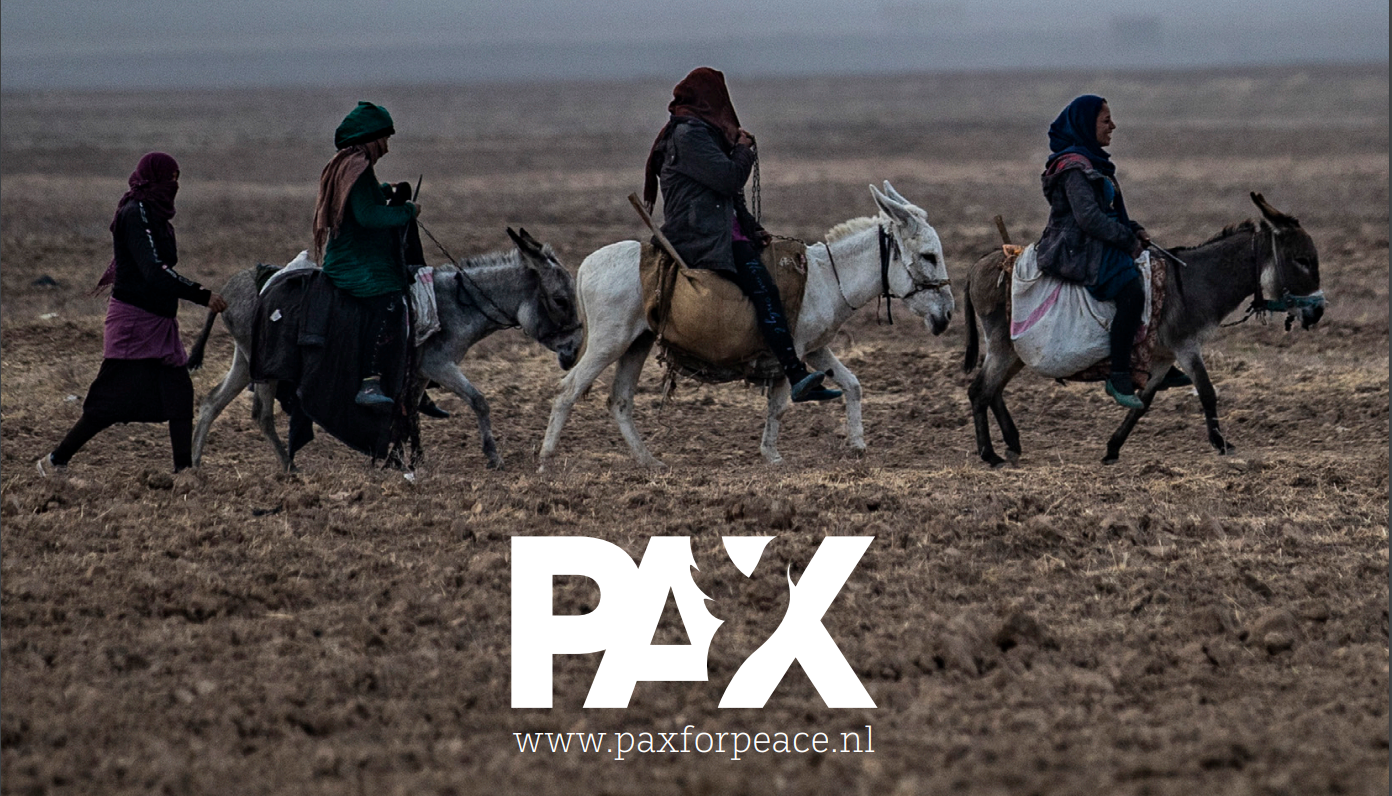The summer of 2021 saw record low levels of rainfall and a sharp decline in water flow into the Euphrates and other rivers in northeast Syria. In a new report entitled, ‘We fear more war, we fear more drought’, PAX has conducted dozens of interviews with pastoralists, farmers, and local authorities, combining this with satellite analysis and humanitarian data. The findings clearly outline the risks for fragmentation among the poorest communities as access to water becomes more difficult and failed harvest creates more socio-economic concerns. While many reports have addressed how this impacts agricultural communities, little attention is given to the thousands of pastoralists roaming over Syrian pastures. Often the poorest of the poor, herders are heavily hit by lack of rain, which has impacted vegetation growth and access to water for their flocks of sheep.
The report aims to highlight the climate-conflict nexus impact on a more granular level among various rural communities in northeast Syria. Based on the many interviews and wider data on climate and socio-economic development, the report outlines how increased pressure on natural resources is impacting livelihoods, which could exacerbate growing social and political tensions among a society exhausted from conflicts and poverty.
After a decade of war that has already had a destructive impact on agricultural infrastructure and resulted in displacement of farming and herder communities, this record-high drought is turning Syria into a new climate hotspot. Both rain-fed and irrigation agriculture are suffering from absence of precipitation. Lower water influx from Turkey resulted in decreasing water levels in Lake Assad, subsequentially affecting the Euphrates River, the regional main lifeline. This meant less water for irrigation, hydroelectricity, and for personal use for the millions of people depending on it.
In many areas PAX visited, there was zero vegetation growth in the spring and summer of 2021, meaning that the hundreds-of-thousands of sheep, cows, goats, and camels are lacking pastures for food and access water sources. The pastoralist communities of Syria are increasingly struggling with the impact of climate change with lower prices for livestock and erratic weather conditions that impact livestock prices, pushing them over the brink over poverty.
As one shepherd near Ras Al Ayn told PAX: “If there is no rain, there is no future.” He lost 150 of his 400 sheep in 2021 and had to flee with his family from a previous grazing ground recently after shelling by the Turkey-backed Syrian National Army (SNA). He now spends most of his money on cattle feed to keep his sheep alive, as local communities don’t let him use their land for his sheep to graze.
The Autonomous Administration of North and East Syria (AANES), the defacto authorities in this part of the country, lack sufficient finances, capacity, and expertise to address these devastating climate and environmental challenges. Farmers and herders lamented the higher prices for water tankers they increasingly depend on, and there are worrying signs of mounting tensions between water provider and their rural customers. In a desperate attempt to find a better life, interviewees often expressed their desire to migrate as they fail to see a future for them in the broken countryside of Syria.
The lack of rain and water in the rivers is also worsening the public and environmental health situation. On top of this, dams were built in the Khabur river in the spring of 2021, and the water flow to Hasakeh from the Alouk water station faced dozens of deliberate interruptions by the SNA, resulting in over 600,000 lacking access to water for longer periods. At the same time, the toxic oil industry keeps polluting local creeks and rivers by dumping contaminated wastewater, further impacting the surface and groundwater sources. Despite the political will to change the situation, the local authorities lack the proper equipment and financial resources to fix the ill-maintained oil infrastructure.
This brief snapshot of the situation in the region both aims to highlight the current struggle among the most vulnerable groups and a warning signal that a solution needs to be found soon to prevent a fallback into further instability and violence. The unstable political situation of northeast Syria hinders a long-term sustainable solution to the many climate and security challenges this part of the country faces. Without a solution to the status of the region and security guarantees, international donors won’t commit to rehabilitation efforts and sustainable investments in the necessary infrastructure and socio-economic development. Addressing these contentious issues is key for the international community if it wants to prevent a further socio-economic decay driven by conflict and climate woes, which only breed fertile ground for extremism to flourish.
Download the full report We fear more war, we fear more drought: How climate and conflict are fragmenting rural Syria.
Images are available upon request.
Previous reports by PAX on Syria can be found here:
- Amidst the Debris: A desktop study on the environmental and public health impact of Syria’s conflict. (Published in 2015)
- Scorched Earth and Charred Lives: Human health and environmental risks of civilian-operated makeshift oil refineries in Syria. (Published in 2016)
- A River of Death: How oil pollution is impacting health and livelihoods in conflict-affected northeast Syria. (Published in 2020)
- War, waste and polluted pastures. An Explorative Environmental Study of the Impact of the Conflict in north-east Syria. (Published in 2021)

